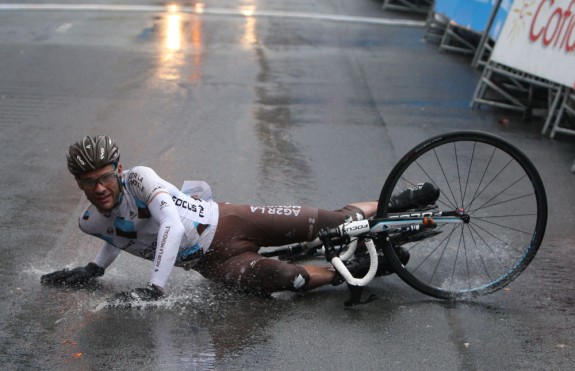The Tour of the Basque Country, in Spanish: Vuelta Ciclista al País Vasco, in Basque: Euskal Herriko txirrindulari itzulia, is an annual cycling stage race held in the Basque Country, Spain, in April. (I know there are a lot of commas in that sentence, but I had no other way. Once we hire an editor for this blog then yell at them for poor sentence structure.)
The first race was held in 1924, but between 1935 and 1969 the race was not held (due to the Spanish Civil War, a fascist dictatorship, the supressing of regional cultures, etc, etc. which we won’t get into here because this is supposed to be a safe place for cycling). However, between 1939 and 1969, similar races were organized. The race is mentioned and described in Ernest Hemingway’s novel The Sun Also Rises. It is one of 24 races that make up the UCI World Ranking calendar.
Because the Basque Country is a mountainous area, there are hardly any flat stages, and the event’s winners therefore tend to be good climbers. Most climbs in the Tour of the Basque Country are not high, but often they are quite steep (my kind of bike ride!).
The first winner was Francis Pélissier from France. The first winner of the ‘modern’ Tour of the Basque Country (1969) was Jacques Anquetil. The most successful rider in the Tour of the Basque Country was José Antonio González Linares, who won the race four times in 1972, 1975, 1977 and 1978. The most recent edition (2012) was won by Spain’s Samuel Sánchez. The 2010 Tour of the Basque Country, was the 50th edition of the cycling stage race. It started on 5 April and ended on 10 April. Chris Horner won the race 7 seconds ahead of Alejandro Valverde after winning the sixth and final stage which was an individual time trial 8 seconds ahead of Valverde. Good on you Chris! Snatching victory from the chemically enhanced jaws of defeat.


Recent Comments